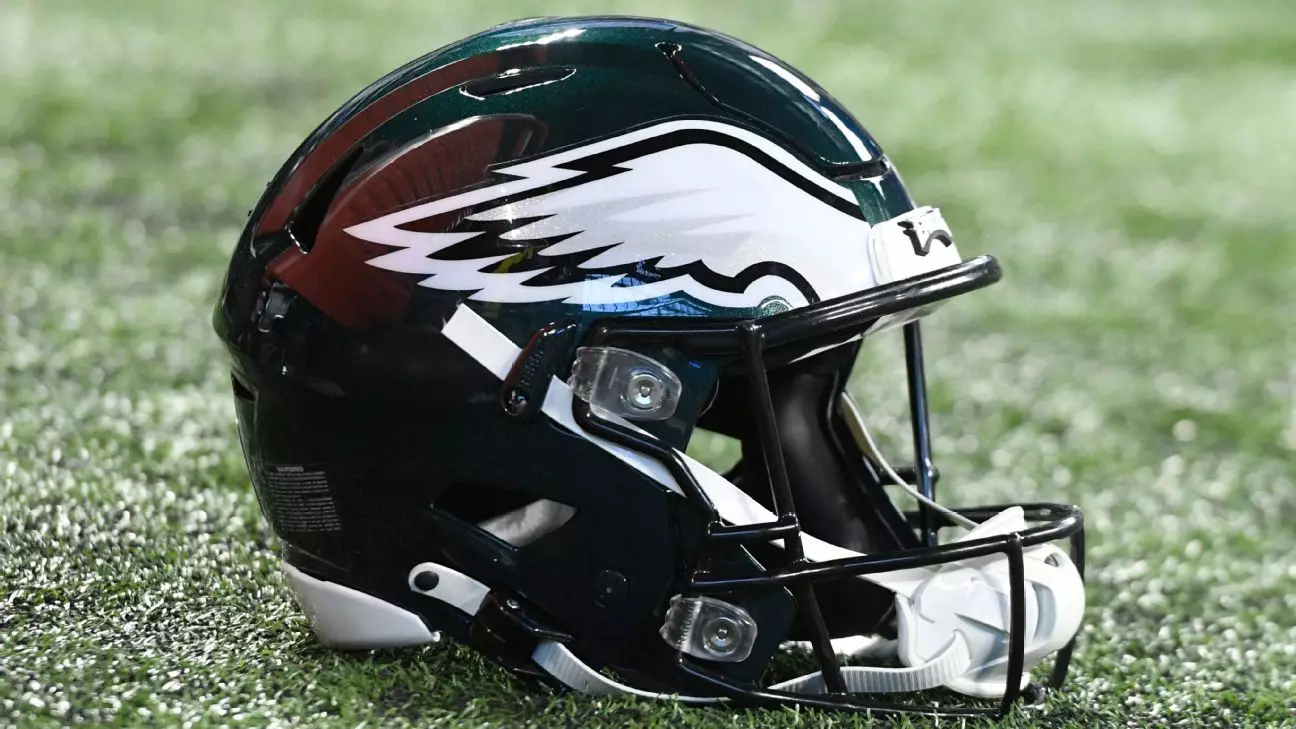The trade of Jakorian Bennett from the Las Vegas Raiders to the Philadelphia Eagles signifies more than a mere roster shuffle; it embodies a broader shift in how each team perceives its defensive potential. Bennett, a promising fourth-round pick in 2023, demonstrated flashes of capability—particularly during his sophomore NFL season—yet found himself increasingly sidelined as the Raiders’ cornerback hierarchy evolved. Despite showing resilience after recovering from a labrum injury, Bennett’s diminished role reflects a team that is seeking more consistent, reliable coverage options.
His journey underscores an ongoing challenge for young cornerbacks: overcoming injury setbacks and establishing their presence amid seasoned competition. Bennett’s acknowledgment of feeling “the best he has since college” points to a critical aspect of player development—health and confidence are intertwined. However, the Raiders’ decision to trade him indicates a belief that his ceiling may be limited at this point, or that they value the depth provided by the incoming veteran defender, Thomas Booker.
The Eagles, on the other hand, are potentially looking for a spark or a rotational piece amidst a shifting secondary landscape. Bennett’s arrival raises questions about how he fits into the Eagles’ plan, especially considering their ongoing search for stability opposite Quinyon Mitchell. The departure of veterans like Darius Slay has left a void; thus, bringing in a young, hungry player like Bennett could serve as both insurance and a future building block.
However, the real story here is less about Bennett’s individual talent and more about the strategic calculus of both teams—Raider’s valuation of immediate depth versus Eagles’ openness to developmental pieces. The Eagles seem content to experiment, balancing their veteran presence with promising rookies and recent acquisitions, all while assessing who can claim the coveted starting role.
Interior Defense and Reinforcement: Evaluating the Booker Trade
On the surface, acquiring Thomas Booker signals a pragmatic move for the Raiders, who are in search of reinforcement along their defensive line. Following the release of Christian Wilkins—whose injury recovery has hampered his availability—the Raiders needed to bolster their interior line with a player capable of contributing in rotational duties. Booker, with his limited but noteworthy NFL experience—18 tackles and a sack in 17 games—is a low-risk, potentially high-reward addition.
Booker’s background as a fifth-round pick with the Texans and a brief stint on Philadelphia’s practice squad depicts him as a player with room to develop. His familiarity with different defensive schemes and his relatively young age (25) suggest he has untapped potential. For the Raiders, this move is less about immediate star power and more about filling a critical depth piece, especially considering the competition at defensive tackle during training camp.
The team’s approach appears pragmatic—rotating players like Tyree Wilson, Leki Fotu, JJ Pegues, and others signal a willingness to experiment and develop depth. This strategic roster management reflects a broader philosophy of building a resilient front that can sustain injuries and remain competitive across the long season. Booker’s addition fits seamlessly into that vision, offering a seasoned yet still ascending talent to challenge for playing time in a position group seeking stability.
Meanwhile, the Eagles’ decision to part with Booker after his limited role underscores their positional priorities. Their defensive line, bolstered by internal development, may have viewed Booker as a depth option rather than a long-term solution. The trade thus reveals a calculated reshuffling—an emphasis on assets that align better with each team’s competitive timeline and strategic goals.
Stretched Depth Charts and the Quest for Stability
The shifting dynamics at cornerback and along the defensive line highlight each team’s quest for defensive stability. For the Raiders, the benching of Bennett and the emergence of new faces signal a critical moment of internal competition. Young players like Eric Stokes, Darien Porter, and Decamerion Richardson are vying for snaps, illustrating a roster built on potential rather than entrenched starters. Bennett’s demotion—despite being healthy and eager—reveals the brutal reality of NFL depth charts: talent alone isn’t enough; consistency, performance, and fit matter immensely.
The Eagles’ situation, however, is slightly different. With Darius Slay departing, the team is experimenting with multiple options to fill the outside corner spot. The ongoing competition between Adoree’ Jackson and Kelee Ringo indicates a team in flux, eager to identify a reliable contributor. Vic Fangio’s comments about the competition being “close” reflect an environment of healthy uncertainty—an encouraging sign for the organization’s flexibility and openness to player development.
Both teams are indirectly emphasizing the importance of roster cohesion and internal competition. They recognize that having reliable depth and versatile players can often be the difference between a successful season and a mediocre one. Each decision—be it cutting Bennett or acquiring Booker—serves as a strategic move to refine these internal competitions and build resilience.
In a league where consistency and health are as critical as star power, these transactions point to a nuanced understanding of what it takes to succeed across an arduous NFL season. The focus shifts from big-name acquisitions to smart, incremental upgrades that allow each team to adapt and thrive amidst unpredictable challenges. Neither the Raiders nor the Eagles appears willing to settle for complacency; instead, they are actively shaping their rosters with calculated precision, demonstrating a clear intention to forge a clearer identity on defense.

